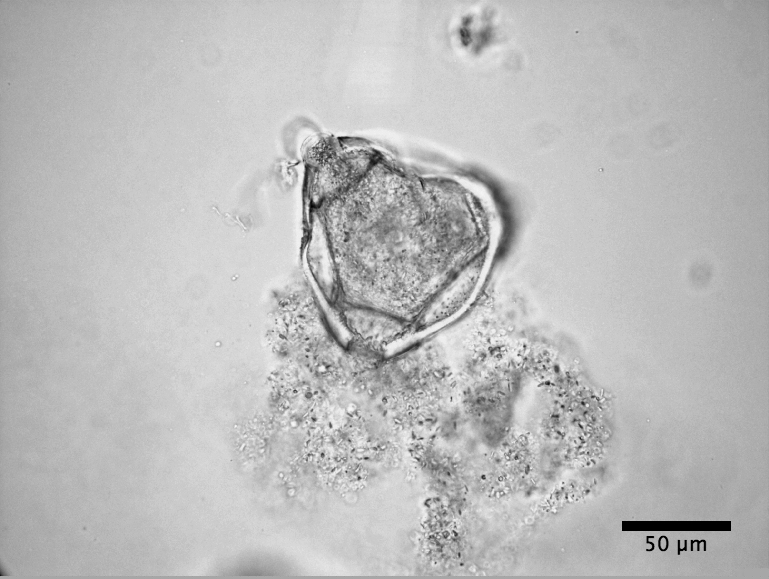Introduction
 |
Robert Brown |
This site's purpose is to serve as a resource for the history, botany and physics associated with Brown's work. It arose from curiosity with regard to two issues that were not found mentioned in the literature.
 |
| Clarkia pulchella pollen |
One issue was the nature of the particles that Brown observed: it is reported here that they are amyloplasts (starch organelles, i.e., starch containers) and spherosomes (lipid organelles, i.e., fat containers).
The other issue was the realization why Brown saw the spherosomes as approximately the same size. This made him think for a while that they were fundamental building blocks of organic nature. Indeed, this was an important stimulation for his famous paper. But, Brown was actually seeing an optical effect of his lens: the diffraction (Airy) pattern and possibly spherical aberration, which will make even a point-sized object seen through a lens look like a disc.
Purpose
 |
| Clarkia pulchella pollen bursting |
This project grew with the realization of the richness of the subject matter, a weaving of history, botany and classical physics, with experimental possibilities. It is meant to provide interesting and accessible resources for various projects for students ranging from middle school to advanced theoretical physics undergraduates.
 |
| Amyloplasts and Spherosomes |
What's On This Site
As various aspects of Brown's work were considered, there arose a long paper by six authors, which can be downloaded here. Available however are the separate sections of this paper, which can be downloaded separately (click on Downloads).
These sections may also be read without downloading (click on Read Online), and here there are provided many pictures not shown in the downloadable paper.
Moreover, an abbreviated version of this paper, aimed at college undergraduate physics students and their teachers, was published in the American Journal of Physics (Am. J. Phys. 78 (12), December 2010) and can be downloaded here.
There are also videos to be seen here (click on Videos).
For a more detailed description, click on the menu bar items.
We would like to hear from people who have found this material in some way useful, perhaps employed some of it in the classroom, perhaps duplicated or extended some of the results, or who have just enjoyed what is offered here. For comments and queries, contact ppearle@hamilton.edu.